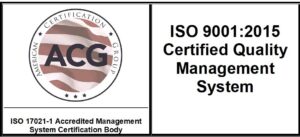Thin Gauge Thermoforming
Thin gauge thermoforming molds a flat sheet of plastic into a usable custom shape using the same process of heat and vacuum as thick gauge thermoforming. The only difference is the thickness of the material used. Thin gauge materials are usually between .010″ to .060″ thick.
The packaging industry utilizes thin gauge thermoforming applications for packaging, sorting and protective solutions. From prototyping, tooling, production and production support, Owings Patterns can custom fabricate your concept design and get it to market — faster and under budget — with thin gauge thermoforming.
Using Vacuum Forming in Thermoforming
Vacuum forming is the process where a heated sheet of plastic is stretched over a male or female mold and a vacuum is applied between the mold and the sheet. The vacuum pulls the heated plastic sheet tight to the mold. Once the plastic sheet cools, the plastic retains the shape of the mold.
Vacuum forming is a less expensive option compared to injection molding and other forming processes. It can also get products to market at a faster pace. The benefits of vacuum forming are low tooling cost and quicker product prototyping.
Prototyping, Production & Tooling
Owings Patterns has a reputation for 100% accurate products through its TruRapid Solutions process. Our in-house engineers use CAD software to custom design your product to your required specifications.
Once we have your product designed, our team can begin the thermoforming tooling process. Depending on your application, we can build tooling from wood, machined aluminum, cast aluminum or composite.
Wood is sometimes used in the prototyping process because it can be easily machined for fast turn around times, short product runs and lower cost. Aluminum and other types of metals are made for long run or permanent tooling. Owings Patterns’ our in-house tooling department can save you time and money on your product.
Thin Gauge Thermoforming Applications
Thin gauge thermoforming is the most typical type of thermoforming in the packaging industry. The most common use for thin gauge thermoforming is custom packaging. The following products can be made using the thin gauge process:


